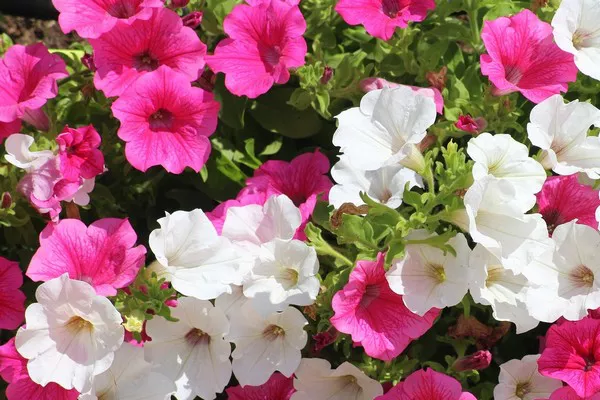Jasmine flower, with its enchanting fragrance and delicate white petals, is a favorite among garden enthusiasts. Whether you’re a seasoned gardener or a beginner looking to add a touch of elegance to your outdoor space, learning how to plant jasmine flower can be a rewarding endeavor. In this comprehensive guide, we will explore the steps to successfully cultivate and nurture these exquisite blooms.
1. Selecting the Perfect Spot for Your Jasmine Flower
Before diving into the planting process, it’s crucial to choose the right location for your jasmine flower. These plants thrive in areas with full sun to partial shade, where they receive at least 4-6 hours of sunlight each day. Adequate sunlight ensures that your jasmine flower will bloom profusely and release its signature aroma. Additionally, well-drained soil with good organic content is essential for optimal growth. Jasmine flowers prefer slightly acidic to neutral soil with a pH level of 6.0 to 7.0.
2. Choosing the Right Jasmine Variety
Jasmine flower comes in various species and cultivars, each with its unique characteristics and growth habits. Common varieties include Arabian jasmine (Jasminum sambac), Confederate jasmine (Jasminum x stephanense), and Carolina jasmine (Gelsemium sempervirens). It’s essential to research and select a jasmine variety that suits your climate and space requirements. Arabian jasmine, for instance, is well-suited for container gardening, while Confederate jasmine is ideal for covering fences and trellises.
3. Preparing the Soil for Planting Jasmine Flower
To create an optimal environment for your jasmine flower, prepare the soil thoroughly. Start by removing any weeds, rocks, or debris from the planting area. Jasmine flowers thrive in soil that is well-drained but retains some moisture. To improve drainage, amend the soil with organic matter like compost or peat moss. Incorporate the organic material into the soil to a depth of at least 12 inches to ensure proper root development.
4. Planting Your Jasmine Flower
Now that you’ve selected the perfect spot and prepared the soil, it’s time to plant your jasmine flower. Follow these steps for a successful planting process:
Dig a Hole: Dig a hole that is twice the width of the jasmine’s root ball and of equal depth. This allows room for the roots to spread comfortably.
Remove the Plant from the Container: Carefully remove the jasmine flower from its nursery container, being mindful not to damage the roots. Gently shake off excess soil to expose the roots.
Place the Jasmine in the Hole: Position the jasmine flower in the center of the hole, ensuring that the top of the root ball is level with the surrounding soil. Fill in the hole with soil, pressing it down firmly but not compacting it too tightly.
Water Thoroughly: After planting, give your jasmine flower a good soak with water to settle the soil and help the roots establish. Keep the soil consistently moist but not waterlogged during the initial period after planting.
5. Caring for Your Jasmine Flower
Successfully planting jasmine flower is just the beginning; proper care is essential to ensure its healthy growth and prolific blooming. Here are some key care guidelines:
Watering: Jasmine flowers require regular watering, especially during dry spells. Water deeply to encourage root growth. Be mindful not to overwater, as waterlogged soil can lead to root rot.
Fertilizing: Jasmine flowers benefit from a balanced, slow-release fertilizer applied in early spring and late summer. Follow the manufacturer’s instructions for the correct dosage.
Pruning: Pruning is essential to maintain the shape and size of your jasmine flower. Prune after the blooming season to remove dead or overgrown branches, and shape the plant as desired.
Mulching: Apply a layer of organic mulch, such as wood chips or straw, around the base of your jasmine flower. Mulch helps retain soil moisture, suppress weeds, and maintain a consistent soil temperature.
Support and Training: If you’re growing a vining jasmine variety, provide a trellis or support structure for the plant to climb. Regularly train the vines to encourage vertical growth and prevent tangling.
6. Dealing with Common Jasmine Flower Issues
Like any plant, jasmine flowers can encounter various issues that may affect their health and appearance. Here are some common problems and their solutions:
Pests: Keep an eye out for common garden pests such as aphids, whiteflies, and spider mites. Use insecticidal soap or neem oil to treat infestations while minimizing harm to beneficial insects.
Diseases: Jasmine flowers are susceptible to fungal diseases like powdery mildew and root rot. Ensure proper air circulation and avoid overwatering to prevent these issues.
Yellowing Leaves: Yellowing leaves can be a sign of nutrient deficiencies. Adjust your fertilizer regimen or check for soil pH imbalances. Iron chelates can help correct yellowing caused by iron deficiency.
Lack of Blooms: If your jasmine flower isn’t blooming, it may not be receiving enough sunlight or proper nutrients. Ensure it gets the right care and make adjustments as needed.
Conclusion
Planting jasmine flower is a fulfilling endeavor that rewards gardeners with not only beautiful blooms but also a delightful fragrance that can transform any outdoor space into a fragrant paradise. By selecting the right variety, providing optimal care, and addressing common issues promptly, you can cultivate a thriving jasmine garden that will enchant your senses for years to come. So, roll up your sleeves, get your hands in the soil, and start your journey to cultivating the captivating beauty of jasmine flowers in your own garden.


